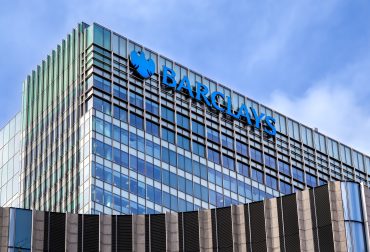
- AI Infrastructure
- AI Investment
- Enterprise AI
Barclays: Tech Giants' Cash Flow Sufficient to Fund AI Infrastructure
6 minute read

Major tech companies generate enough operating cash to fund artificial intelligence infrastructure while maintaining shareholder returns
Key Takeaways
- Hyperscalers generate sufficient cash flow to fund AI investments while maintaining shareholder returns, contrasting sharply with leveraged telecom infrastructure builders of the dotcom era
- 700 million users engage with ChatGPT weekly and one in ten U.S. companies report AI-driven efficiency gains, indicating robust foundational demand for AI technologies
- UK businesses invested average £235,600 on AI over the past year, with 68% planning increases and 42% hiring for AI-focused roles to address critical skills gaps
Introduction
Barclays dismisses concerns about an artificial intelligence investment bubble, citing strong cash generation by hyperscalers as evidence that AI spending remains on solid financial footing. The investment bank’s analysis reveals that major technology companies generate sufficient operating cash flow to simultaneously fund AI infrastructure development and return capital to shareholders.
This assessment comes as global AI investment reaches unprecedented levels, with McKinsey reporting that the situation contrasts favorably with the leveraged infrastructure spending that characterized the dotcom bubble. The bank’s research indicates that current AI investment patterns reflect sustainable business fundamentals rather than speculative excess.
Key Developments
Barclays conducted stress tests on capital expenditure assumptions across major technology companies and concluded that hyperscaler spending acceleration remains fully funded by operating cash flows. The bank notes that even when accounting for share repurchases, substantial headroom exists before cash outflows exceed inflows.
The analysis draws stark comparisons to the early 2000s telecommunications boom, when major telecom companies financed dotcom infrastructure with significantly higher financial leverage. Today’s hyperscalers demonstrate superior operating leverage and cash generation capabilities that support sustained AI infrastructure investment.
User adoption metrics support the investment thesis, with over 700 million users engaging with ChatGPT weekly. Additionally, one in ten U.S. companies now report measurable AI-driven efficiency gains, indicating that demand foundations are strengthening as AI workloads advance toward complex reasoning models and autonomous agents.
Market Impact
The global AI market reached approximately $391 billion in 2025, with projections indicating a compound annual growth rate of 35.9%. Private investment in generative AI totaled $33.9 billion in 2024, representing over 20% of all AI-related private investment flows.
Regional investment patterns show the United States leading with $109.1 billion in private AI funding during 2024. However, Europe and Asia are rapidly accelerating their AI investment programs, creating new opportunities for global business expansion and technology transfer.
Employment projections indicate that 97 million people will work in the AI sector by the end of 2025, reflecting the industry’s rapid expansion across multiple economic sectors including healthcare, insurance, and media.
Strategic Insights
Enterprise-focused AI platforms are emerging as critical differentiators, with leading technology firms prioritizing performance, profitability, and security features tailored for corporate customers. Strategic partnerships between chip makers, cloud hyperscalers, and software providers are becoming essential for delivering integrated solutions.
Data-driven product development is transforming customer relationships, with businesses treating data as a strategic asset central to AI-powered operations. Nearly one-third of AI-adopting businesses report benefits including improved innovation, enhanced decision-making, superior customer experiences, and reduced operational costs.
The financial services, IT and telecommunications, and technology sectors are driving demand for AI and digital technology skills, which business leaders identify as the most critical hiring priority. This skills gap is spurring significant investment in training programs and talent acquisition strategies.
Expert Opinions and Data
Barclays research shows UK businesses invested an average of £235,600 on AI and emerging technologies over the past year, with 68% planning to increase spending over the next 12 months. Large corporations with more than 250 employees invested an average of £400,000, compared to £225,500 for medium enterprises and £125,250 for small businesses.
The Barclays Business Prosperity Index reveals that 42% of firms plan to hire for AI-focused roles, with one in five companies already creating dedicated AI positions. This hiring surge responds to workforce gaps that business leaders consider the primary barrier to AI adoption and scaling.
Analysis of over one million Barclays clients shows resilient but cautious business activity, with minor declines in cash inflows and slight increases in overdraft usage. Despite economic headwinds including inflation concerns affecting 33% of businesses and increased utility costs impacting 22%, firms borrowed £9 billion through the Barclays Business Prosperity Fund in the first half of 2025.
Conclusion
Barclays maintains that strong cash generation from hyperscalers supports the financial viability of continued AI infrastructure development. The combination of robust user adoption, measurable business benefits, and sustainable funding models distinguishes current AI investment from previous technology bubbles.
Business leaders express high confidence in AI’s transformative potential despite implementation challenges around data quality and organizational silos. The convergence of enterprise demand, technological advancement, and strategic execution creates conditions for sustained AI investment growth across global markets.







